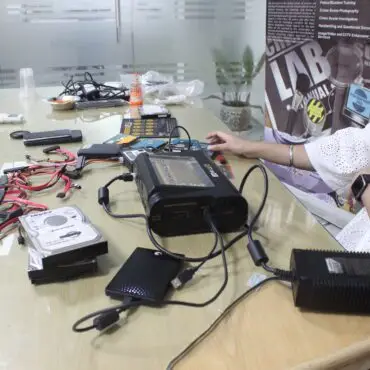The rise of drones has revolutionised industries, from aerial photography and agriculture to law enforcement and delivery services. However, this technological advancement also introduces new challenges in security, privacy, and criminal investigations. Drone forensics has emerged as a critical field to analyze, recover, and interpret digital evidence from drones, ensuring accountability and supporting legal processes.
What is Drone Forensics?
Drone forensics is the scientific process of examining unmanned aerial vehicles (UAVs) and their associated systems to extract and analyze digital evidence. This includes recovering flight logs, GPS coordinates, camera recordings, communication data, and other digital traces that can provide insights into a drone’s activity.
Unlike traditional digital forensics, drone forensics involves multiple data sources, including the drone hardware, remote controller, onboard memory, cloud services, and associated mobile applications.
Why Drone Forensics is Important
-
Criminal Investigations: Drones are increasingly used for illegal activities, such as smuggling, surveillance, or even attacks. Forensic analysis can uncover flight paths, operator identity, and recorded evidence.
-
Accident Analysis: In cases of drone crashes or collisions, forensic data helps determine the cause, whether technical failure, operator error, or environmental factors.
-
Regulatory Compliance: Aviation authorities and law enforcement agencies rely on drone forensics to ensure drones comply with no-fly zones, altitude restrictions, and privacy laws.
-
Cybersecurity Investigations: Drones may be hacked or used to breach secured areas. Forensic analysis can trace the source of cyber attacks and evaluate vulnerabilities.
Key Components in Drone Forensics
1. Flight Data Logs
Most modern drones store detailed flight logs, which include GPS coordinates, altitude, speed, battery status, and timestamps. These logs are crucial for reconstructing the drone’s path and activity.
2. Memory and Storage Devices
Drones often have internal memory cards (SD cards or onboard flash storage) that store images, videos, and telemetry data. Analyzing these devices can reveal media content and operational history.
3. Remote Controllers and Mobile Apps
Many drones are operated via remote controllers or smartphone apps. These devices may contain cached flight data, user settings, and account information linked to the drone.
4. Cloud and Online Data
Some drones sync data to cloud servers, including flight logs, media, and firmware updates. Extracting this data can provide historical activity and backup evidence.
5. Communication Channels
Drones communicate with controllers via Wi-Fi, RF, or Bluetooth. Capturing and analysing communication logs can help identify operators or detect unauthorised access.
Tools and Techniques Used in Drone Forensics
-
Data Extraction Tools: Specialised software can extract flight logs, videos, and metadata from drones, controllers, and mobile devices.
-
GPS and Mapping Analysis: Flight paths are mapped using GPS data to verify drone activity, locations, and potential violations.
-
Media Analysis: Photos and videos undergo forensic scrutiny for timestamps, geolocation, and tampering detection.
-
Firmware Analysis: Examining the drone’s firmware can detect malware, modifications, or performance issues affecting flight behaviour.
-
Cloud Forensics: Tools can access cloud-stored drone data with legal authorisation, recovering evidence even if the physical device is lost or damaged.
Challenges in Drone Forensics
-
Diverse Manufacturers: Different drones have varying hardware and software architectures, complicating standard forensic procedures.
-
Encrypted Data: Flight logs and communications are often encrypted, requiring advanced decryption methods.
-
Remote Storage: Data stored on cloud platforms may be located across different jurisdictions, creating legal hurdles.
-
Volatile Evidence: Drone data can be easily wiped, overwritten, or corrupted, demanding prompt evidence preservation.
Legal and Ethical Considerations
Drone forensics must adhere to legal standards for evidence collection, preservation, and presentation in court. Investigators must follow procedures to maintain the chain of custody, ensuring that digital evidence remains admissible in legal proceedings. Additionally, privacy regulations must be considered when accessing flight and media data.
Conclusion
Drone forensics is a rapidly evolving field that bridges aviation, cybersecurity, and digital investigation. By systematically analysing drones, investigators can reconstruct activities, uncover criminal intent, and ensure regulatory compliance. As drone usage continues to expand, mastering drone forensics will be essential for law enforcement, security agencies, and forensic professionals.





Post comments (0)